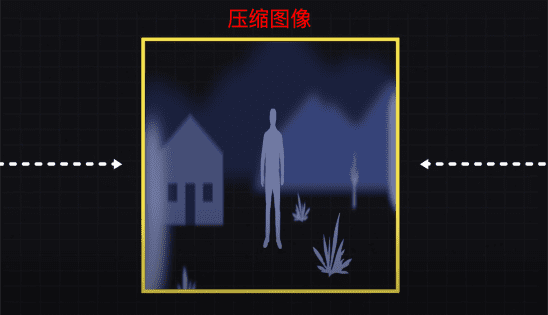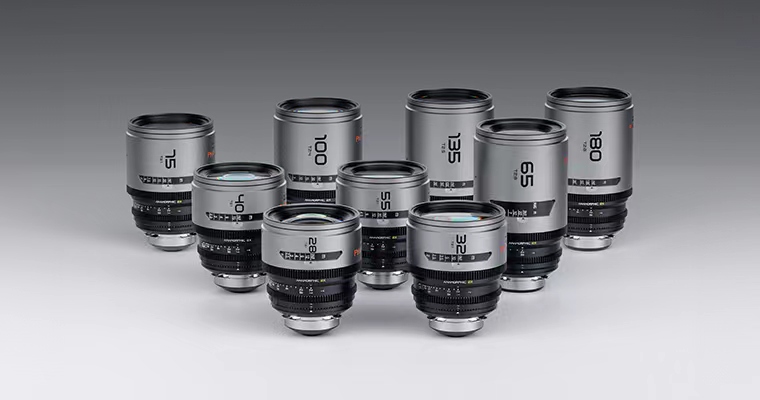Anamorphic wide-screen lenses were widely used by the American film industry in the 1950s in order to cope with the impact of the emerging TV industry and to widen the gap between home TV and large-screen viewing in theaters.
3-1-2023
What is an anamorphic lens?
First of all, I have to explain a point, which refers to "screen" rather than "screen". The English name of this type of lens is very uniform "Anamorphic", but the Chinese translation is full of strange things, "anamorphic lens", "widening lens", "anamorphic wide screen lens", and even "anamorphic wide ’screen’ lens"... ...
Anamorphic wide-screen lenses were widely used by the American film industry in the 1950s in order to cope with the impact of the emerging TV industry and to widen the gap between home TV and large-screen viewing in theaters. Press the content on the left and right sides of the screen to keep the top and bottom unchanged, and then use the convex lens to restore the screen when it is shown in the cinema, and you can get a wider screen than the TV.
1. What is an anamorphic lens?
First briefly summarize what a spherical lens is.
(Note: The following is an understanding definition, non-professional optical analysis)
Generally speaking, a spherical lens is a conventional lens that we use for imaging every day. Since the curved surface curve of its lens element is a part of a sphere, the spherical shape can ensure that the performance of light in all directions is the same. When light passes through a spherical lens Produces a "regular" image when it hits the sensor. There are some lenses that use aspherical lenses, but their imaging effects are similar to those of spherical lenses, so they are out of the scope of our discussion for the time being.
The imaging of the widening lens is somewhat different from this. First, the basis of deformation is distortion, so a cylindrical lens (some of which are prisms, hereinafter collectively referred to as anamorphic lens) elements are added on the basis of the original spherical lens. When light passes through the anamorphic lens It produces an image that appears to be "squeezed" (squeezed vertically in the y-axis) when applied to the sensor. During the final playback (post-production), the image needs to be "decompressed" (stretched horizontally on the x-axis) to restore the normal effect.


2. The picture effect of widescreen lens vs conventional spherical lens
The most well-known feature of the anamorphic lens is that it can achieve a horizontal widescreen effect after interpreting the material, which satisfies the viewing habits of the human eye. With the efforts of the film industry to promote "widescreen" for many years, this has also become the criterion for whether the film has a "movie feel". one of the factors. Movie wide-screen lenses are very expensive and difficult to rent. In order to obtain this feeling, the easiest way for most shooting teams is to directly add up and down masks under the screen shot by the spherical lens to obtain the "wide-screen" effect, but "wide" is only It is one of the characteristics of wide screen lens.
Anamorphic lens focal length = non-anamorphic lens focal length × (target aspect ratio ÷ current sensor aspect ratio)
Apply the formula as an example: Suppose the focal length of the anamorphic lens is 50mm, the target aspect ratio is 2.66:1, and the current sensor aspect ratio is 4:3, find the equivalent focal length of the non-anamorphic lens.
50=x·(2.66:1 ÷ 4:3)
50=x·(7.98 ÷ 4)
50=x·1.995
x=50 ÷ 1.995
x=25
Let me give you an example: Suppose you are using a 50mm 2x anamorphic lens, its vertical focal length is 50mm, but the horizontal direction needs to be stretched twice, which is equivalent to 25mm. If the spherical lens wants to obtain the same width, it can only choose 25mm to obtain the same wide viewing angle. However, the camera distance, perspective, and depth of field compression of 25mm and 50mm are completely different. The transformation is very subtle, and the specific depth of field difference has reached 4 times. You can check the depth of field conversion formula for details. This picture effect is unique to anamorphic widescreen.
One sentence summary is: use telephoto to shoot the depth of the mid-focus, but has the sense of perspective of the telephoto; use the medium-focus to shoot the effect of wide-angle, but have the sense of perspective of the medium-focus; use the wide-angle to shoot the effect of panoramic photography, But there is a sense of wide-angle perspective. However, due to the change of the shooting distance, the perspective changes, so in terms of the perspective relationship, the spherical lens cannot fully achieve the widening effect through other means.


Out-of-focus oval bokeh
The popular explanation is that the reason for the elliptical facula is that the improvement of the current lens manufacturing process level has achieved the same magnification ratio in the focal plane, but the compression ratio of the out-of-focus imaging part is still greater than the set magnification, so that the out-of-focus part is recorded on the photosensitive element and restored. A normal circular spot cannot be obtained.
Of course, a rigorous explanation needs to borrow a lot of mathematical formulas, involving very professional optical knowledge such as the circle of confusion, the entrance pupil, and the exit pupil. After consulting the relevant literature, a simpler scientific explanation method has not been found. Check out.


The brushed glare is also an optical defect caused by the early lens design and technical level, but it is amazing that a unique aesthetic style has been formed after years of precipitation. The current technical level can achieve no brushed glare, but due to the preference of the public, many manufacturers still choose to retain this feature.
Wide-screen lenses also have distortion, low sharpness, and severe dispersion, but I don’t think they are unique features, but more the result of technical conditions in a specific period. Now Zeiss MA series widescreen lenses are very sharp, the distortion is well controlled, and the glare is preserved just right. From the perspective of lens imaging quality, it is very good, but why this set of lenses is not popular, I checked. Most of the responses were "so perfect, people don’t even know I paid a lot of money to rent widescreen lenses". Therefore, affected by many factors, the imaging quality parameters are not very good at measuring the popularity of wide-screen lenses. It is not that the current technology cannot achieve perfect wide-screen lenses, but that users may not like them.
3. Selection of deformation magnification
The most intuitive feeling of anamorphic magnification is the change of frame stretching, but in actual use, it is found that the commonly used widescreen ratio is 2.35:1, and it can also be achieved by using a 1.33x anamorphic widescreen lens with a 16:9 format sensor. With this specification, why do many photographers still insist on buying a 2x widescreen lens?
More answers are that the unique bokeh is more stylized. Although the 1.33x or 1.6x widescreen lens is fully sufficient to achieve 2.35:1, 2.55:1 and other widescreen effects when most of the current shooting equipment is 16:9, it is rarely possible to fully use the 2x zoom lens. The stretching effect reaches a 3:1 picture, which is too wide for our visual habits. However, the larger the compression ratio, the more obvious the widescreen style is. The inconsistency between the vertical focal length and the horizontal focal length causes its unique "waterfall out-of-focus". It cannot be equivalently simulated by a spherical mirror, and it is difficult to achieve even through post-production technology.

